3
marzoWhat's The Current Job Market For Good Robot Vacuum Cleaner Professionals Like?
The Silent Housekeeper: Finding the Right Robot Vacuum Cleaner for a Spotless Home
In today's hectic world, time is a valuable commodity. Household tasks, while essential, often are up to the bottom of the top priority list. Enter the robot vacuum cleaner-- a marvel of contemporary benefit developed to recover your time and keep a clean home with minimal effort. No longer a futuristic dream, robot vacuums have ended up being significantly advanced, efficient, and available, changing the way we approach floor cleaning.
However with a myriad of designs flooding the market, browsing the world of robot vacuums can feel overwhelming. What features genuinely matter? How do you choose one that suits your particular needs and home? This article will look into the key aspects of selecting a "great" robot vacuum cleaner, equipping you with the understanding to make a notified choice and invite a silent, efficient housemaid into your home.
What Defines a "Good robot vacuum" Robot Vacuum Cleaner?
The definition of a "great" robot vacuum extends beyond simple suction power. It includes a mix of factors that contribute to effective cleaning, ease of use, and long-term value. Here are the essential elements to think about:
1. Navigation and Mapping Prowess:
A robot vacuum's ability to browse your home smartly determines its cleaning efficiency and coverage. There are several navigation innovations utilized, each with its own strengths:
- Random Navigation: These entry-level designs relocate a seemingly random pattern, bouncing off barriers up until the battery runs low. While budget friendly, they can be less effective, missing areas or cleaning locations several times.
- Systematic Navigation (Row-by-Row/Zig-Zag): These robotics clean in straight, parallel lines, making sure more methodical coverage. They are normally more efficient than random navigation designs.
- Smart Mapping with SLAM (Simultaneous Localization and Mapping): This sophisticated innovation, often making use of LiDAR (Light Detection and Ranging) or camera-based systems, allows the robot to develop a detailed map of your home. This map allows:
- Efficient Path Planning: Optimized cleaning routes for faster and more complete protection.
- Zoned Cleaning: Target specific rooms or locations for cleaning straight from an app.
- Virtual Walls and No-Go Zones: Define limits to prevent the robot from going into specific locations, like fragile carpets or pet bowls.
- Multi-Floor Mapping: Some advanced designs can keep maps of multiple floorings, perfect for multi-story homes.
2. Suction Power and Cleaning Performance:
The main function of a robot vacuum is, obviously, cleaning. Suction power is a crucial indicator of its ability to raise dirt, dust, and debris from numerous floor types.
- Floor Type Matters: Homes with primarily hard floorings (wood, tile, laminate) may not require the most effective suction, while homes with carpets and carpets will take advantage of greater suction to effectively extract dirt and pet hair embedded in the fibers.
- Brush Roll Design: The brush roll beneath the robot plays an essential function in agitating dirt and directing it towards the suction nozzle. Different brush roll styles are enhanced for various floor types. Some function bristles for carpets, while others utilize rubber blades or a mix for hard floorings and pet hair management.
- Specialized Features: Look for features like "carpet boost," where the robot instantly increases suction when it spots carpet, and edge cleaning modes, utilizing side brushes to efficiently clean along walls and baseboards.
3. Battery Life and Coverage Area:
Battery life dictates for how long your robot vacuum can clean on a single charge and, as a result, the size of the area it can cover.
- Consider Your Home Size: Larger homes will need robots with longer battery life. Some designs can run for 90-120 minutes or more, while others might offer 60 minutes or less.
- Auto-Recharge and Resume: Many robot vacuums feature auto-recharge. When the battery is low, they automatically go back to their charging dock, recharge, and then resume cleaning from where they left off. This is particularly helpful for larger homes.
4. Smart Features and Convenience:
Modern robot vacuums frequently come equipped with a series of smart functions that enhance their functionality and user experience:
- App Control: Most smart robot vacuums can be managed via a smartphone app, allowing you to:
- Start, stop, and pause cleaning cycles remotely.
- Set up cleaning times.
- Screen cleaning progress and battery status.
- Gain access to maps, set zones, and virtual walls (for mapping models).
- Adjust suction power and cleaning modes.
- Voice Control Integration: Compatibility with voice assistants like Amazon Alexa or Google Assistant allows hands-free control through voice commands.
- Mopping Functionality: Some robot vacuums are hybrid gadgets, integrating a mopping function. These often include a water tank and a mopping pad that drags behind the vacuum, damp-mopping tough floors.
- Obstacle Avoidance: Advanced models utilize sensors to detect and prevent challenges like furnishings legs, pet bowls, and cable televisions, minimizing the opportunities of getting stuck or bumping into objects.
- Dustbin Capacity and Ease of Emptying: A larger dustbin minimizes the frequency of emptying. Consider the ease of eliminating and clearing the dustbin - some are simpler and less untidy than others.
- Filtering System: HEPA filters are helpful for allergic reaction victims, as they trap fine dust particles and allergens.
- Noise Level: Robot vacuums vary in sound levels. If sound level of sensitivity is an issue, try to find designs that are promoted as quieter.
Choosing the Right robot vacuum that vacuums and mopsautonomous vacuum for Your Needs:
Selecting the perfect robot vacuum depends on your specific home environment and cleaning top priorities. Think about these factors:
- Your Floor Type:
- Predominantly Hard Floors: Focus on designs with effective organized navigation, great suction, and consider a vacuum-mop hybrid for included floor cleaning abilities.
- Carpets and Rugs: Prioritize high suction power, a brush roll designed for carpets, and possibly features like carpet boost.
- Mixed Flooring: Look for versatile models that perform well on both tough floorings and carpets, ideally with automatic floor type detection and suction modification.
- Home Size and Layout:
- Apartments or Small Homes: A basic design with random or organized navigation and standard battery life might be enough.
- Larger Homes or Multi-Level Homes: Invest in a robot with smart mapping, long battery life, auto-recharge and resume, and possibly multi-floor mapping capabilities. Think about having numerous robots for different floorings or by hand moving one robot in between levels.
- Pet Owners: Pet hair is a typical cleaning challenge. Look for robot vacuums particularly designed for pet owners, identified by:
- Strong Suction: To successfully pick up pet hair and dander.
- Tangle-Free Brush Rolls: To minimize hair cover and keep cleaning performance.
- Larger Dustbins: Pet hair can rapidly fill up dustbins.
- HEPA Filters: To trap pet dander and allergens.
- Spending plan: Robot vacuum costs vary considerably. Establish your spending plan and focus on features based on your requirements.
- Entry-Level: Basic cleaning performance, random or systematic navigation, appropriate for smaller areas.
- Mid-Range: Improved navigation, more powerful suction, more smart features, excellent balance of efficiency and rate.
- High-End: Advanced navigation (LiDAR mapping), premium features, superior cleaning efficiency, typically with self-emptying dustbins and more sophisticated app control.
Top Robot Vacuum Brands to Consider:
While numerous brand names exist, some consistently receive high ratings and are understood for their quality and performance. Credible brand names include:
- iRobot Roomba: A leader in the robot vacuum market, understood for dependability and a wide variety of models catering to various spending plans and needs.
- Shark: Focuses on effective suction and ingenious brush roll designs, frequently standing out in pet hair elimination.
- Eufy (by Anker): Offers a balance of functions and affordability, offering great value for money.
- Roborock: Known for innovative innovation, especially LiDAR navigation and detailed app functions, often using high performance at competitive costs.
- Samsung: Integrates smart home innovation and elegant designs, with designs offering good efficiency and features.
- Ecovacs: Provides a variety of models, including those with advanced mopping abilities and obstacle avoidance.
Keeping Your Robot Vacuum:
To ensure your robot vacuum operates efficiently and lasts longer, routine upkeep is vital:
- Empty the Dustbin Regularly: Ideally after each cleaning cycle or as needed.
- Tidy the Brush Roll and Side Brushes: Remove hair and debris that can get tangled around the brushes.
- Clean or Replace Filters: Follow manufacturer suggestions for filter maintenance.
- Wipe Sensors Clean: Dust and debris can obstruct sensing units, affecting navigation.
- Look for Obstructions: Periodically examine wheels and moving parts for any blockages.
Conclusion:
An excellent robot vacuum cleaner is more than simply a device; it's an investment in time-saving benefit and a cleaner, healthier home. By understanding the essential functions, considering your specific needs and home environment, and doing a little research, you can confidently select a robot cleaner vacuum that will become your relied on quiet housekeeping partner, freeing you to focus on what matters most. Let your robot vacuum look after the floorings, so you can take back your time.
Frequently Asked Questions (FAQs) about Robot Vacuum Cleaners:
Q1: Are robot vacuum worth the financial investment?
A: For numerous, yes. Robot vacuums offer significant convenience by automating a recurring task. They are outstanding for day-to-day upkeep cleaning, keeping floors consistently tidier and lowering the requirement for frequent manual vacuuming.
Q2: How typically should I run my robot vacuum?
A: It depends upon your needs and way of life. Daily cleaning is perfect for high-traffic areas or homes with animals. For less busy families, running it a couple of times a week may be enough. Scheduling is a great function to automate this process.
Q3: Can a robot vacuum entirely change a standard vacuum cleaner?
A: While robot vacuums are exceptional for everyday surface area cleaning, they may not completely replace a standard vacuum cleaner for deep cleaning tasks, reaching tight corners, or cleaning upholstery. They are best automatic vacuum seen as an enhance to, instead of a complete replacement for, conventional vacuuming.
Q4: Do robot vacuum uk vacuums work well on dark carpets?
A: Some older or less advanced robot vacuums can have trouble spotting dark carpets, in some cases mistaking them for ledges and avoiding them. Nevertheless, lots of contemporary models are designed to browse dark surface areas efficiently. Inspect product specs and evaluations if you have dark carpets.

Q5: How long do robot vacuum typically last?
A: The life expectancy of a robot vacuum depends upon factors like brand quality, frequency of usage, and upkeep. Normally, a well-kept robot vacuum can last for a number of years, generally ranging from 3 to 7 years. Battery life might deteriorate over time and need replacement eventually.


Reseñas